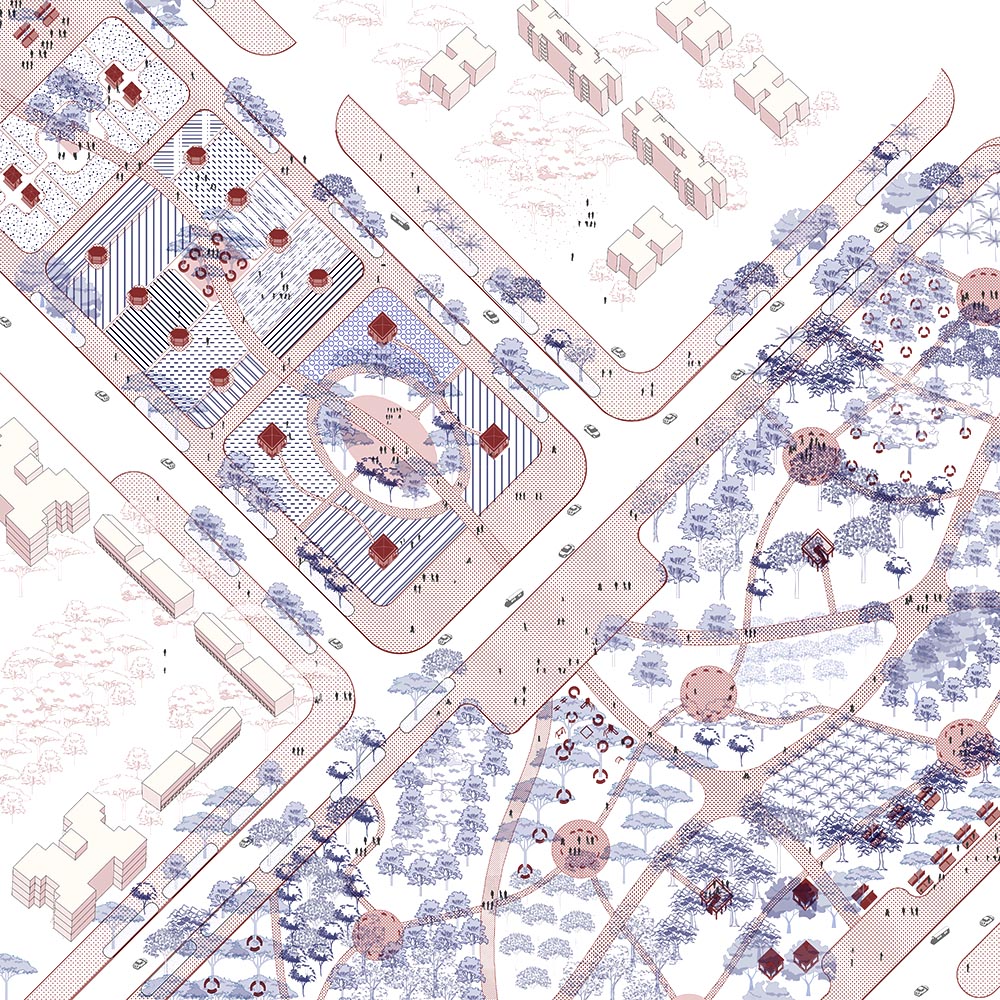Furthermore, the landscapes within the city contribute to this issue as well. Widely regarded as ‘The Green City’ because of its monumental landscapes, the city of Gandhinagar consists of landscaped areas like the central vista and the block/sector street edges that aren’t being utilized to their full potential, overlooking their socio-ecological aspects. The wide streets are incoherent with all the user groups, which further makes the edges remote and the function of these landscaped areas dials down to aesthetics and in some cases, just for carbon sequestration. This calls for a reappraisal of how landscapes can be productive within cities.
Edible Streetscapes
The vision for the city of Gandhinagar is Edible Streetscapes. Why streetscapes?
The city is renowned for its wide green streets. However, understanding the streets in Gandhinagar brings to light that many are not developed, the edges are under-utilised or not utilised at all. In ROW, only carriage way is constructed and large swaths of land on the side are un-programmed. Thus it makes the edge undefined, inaccessible, and loose.

Further, the food miles have already disconnected people from growing food and the project questions if food can be made visible and integrated with urban landscape especially on corridors and central vista. It can have multiple benefits – can provide space for citizen to actively participate, can bring trees and vegetation in public domain, and give people access to growing and foraging for food, can sequester carbon, it could repurpose swaths of vacant land into edible spaces, mitigate stormwater run-off, as well as support other species such as birds, bees, butterflies etc.
Vision Plan 2030
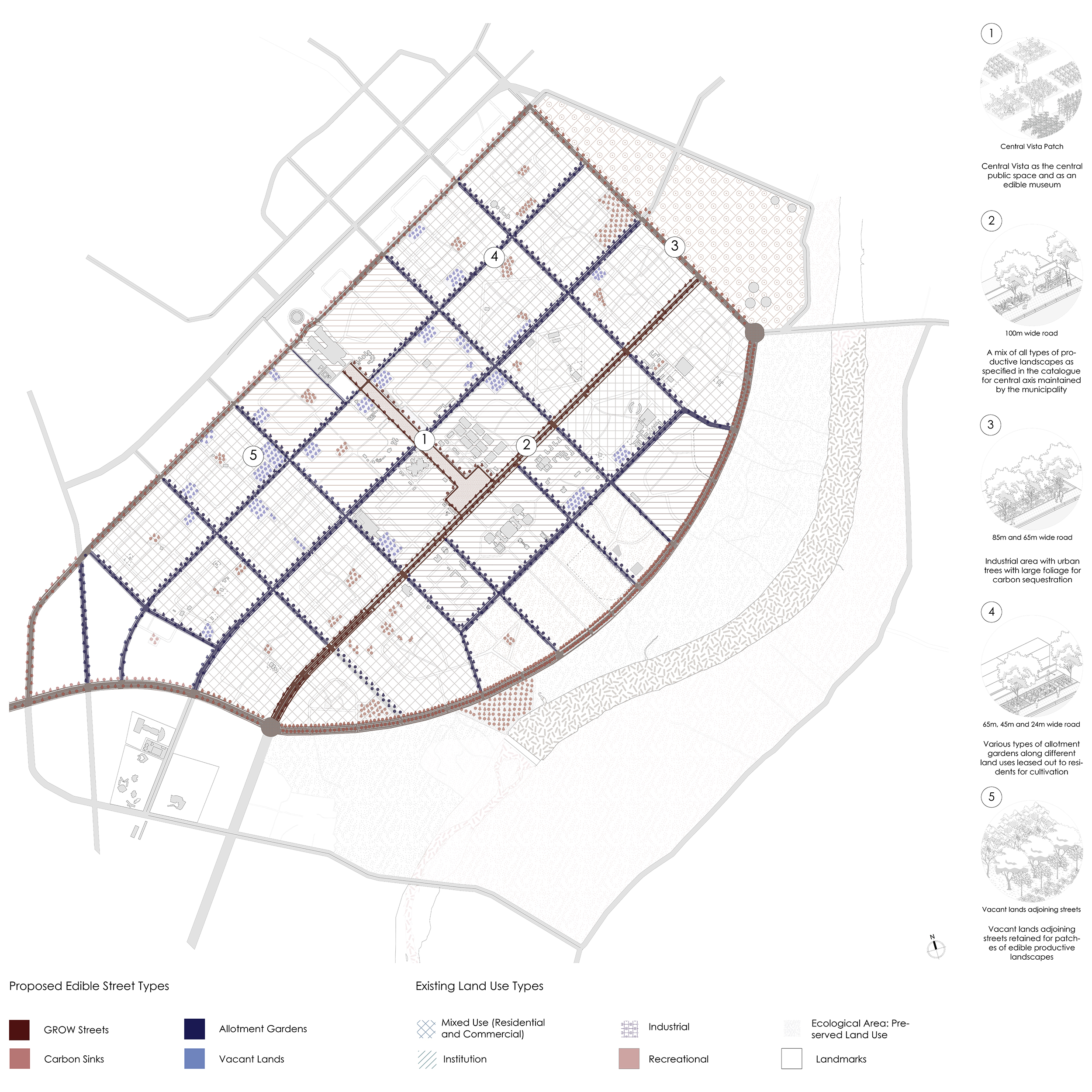
So at XL scale the strategy looks at re-designing the ROW to support functions such as: cycle tracks, parking areas, carriageways and service lanes for vehicular movement, continuous pedestrian infrastructure on edges and along with swales and tree cover for the citizens to access and engage with these grow patches (for food or trees).
The central axis with ROW of 100 mts in front of Vidhan Sabha and 150m of the Central Vista will incorporate foraging and edible landscapes supported by social programs for the city and will be maintained by municipality.
The ROW encompassing the city and that is adjoining the industrial zone will be planted with ever-green trees with large canopy that can trap PM particles to improve overall air quality.
The ROW of 65 mts and and 45 mts primary streets of the city will have gardens for allotments which can be leased and maintained by the residents.
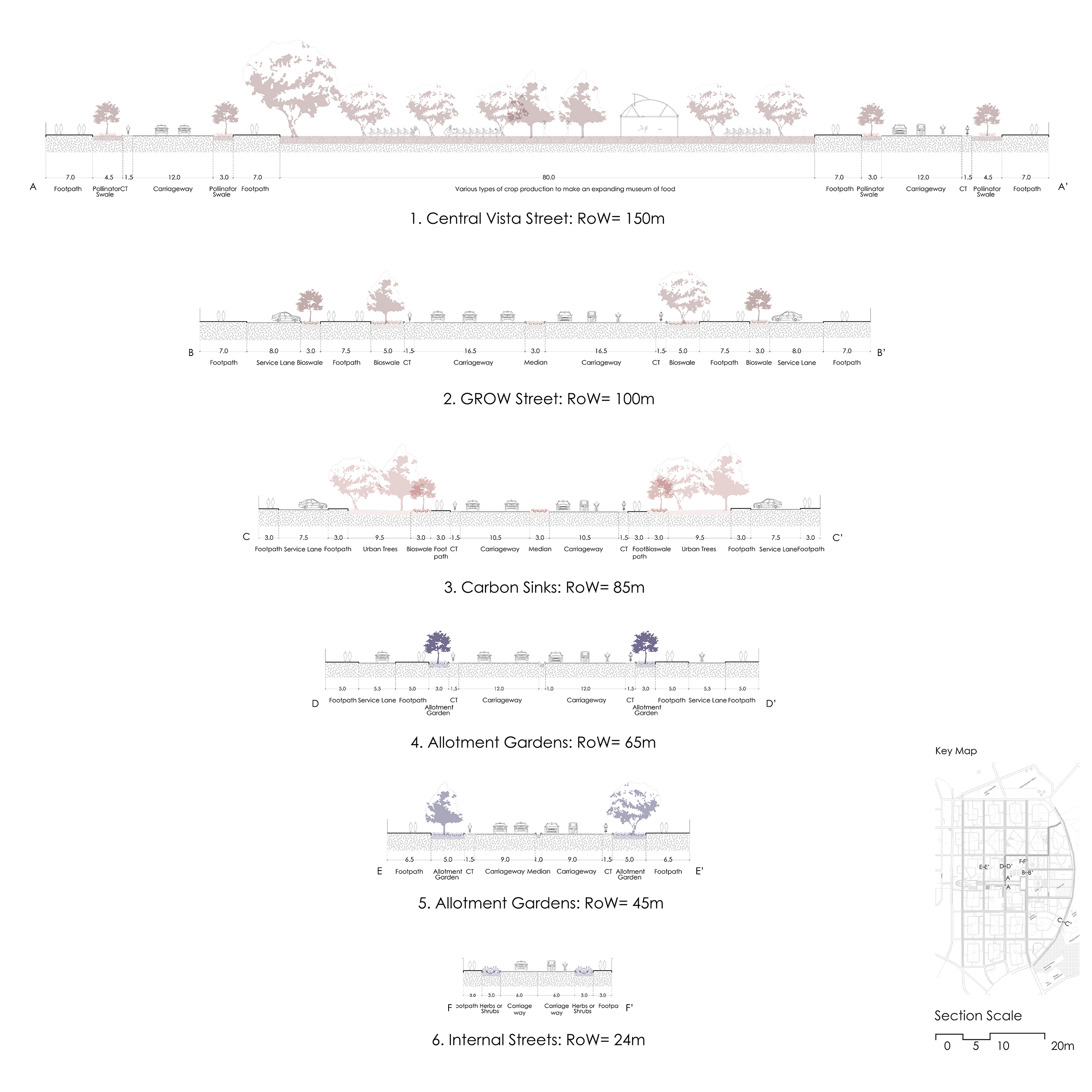
To achieve this – the project redesigns the different ROW’s to incorporate various functions.
The different spatial divisions include: Continuous footpath, service lanes for ROW > 85 mts, parking areas, bicycling track, and swales with grow patches (for food or trees) and for ROW >45 and <85, the same spatial divisions except service lanes are allocated.

The swale patches can include easement gardens, herb gardens, pollinator gardens, vegetable patches, or fruit gardens and evergreen trees with large canopy for shade and carbon sequestration. The type of swale would be coherent with the immediate context in terms of land use and functions of spaces.

The XL plan also identifies vacant public lands of the city adjoining the street to be programmed for food storage, seed banks, training centres etc and along with the central 100m wide patch of Central Vista for large scale programs like orchards, urban forests and urban agricultural activities.
L Scale Design for Central Vista
The Central Vista extends the theme of edible street as a visible and programmed landscape to showcase diversity of plant, fruit and tree species naturalised to this context and climate.
Why Edible Museum? The absence or inaccessible nature of landscapes in the city calls for a reappraisal of the ways in which one engages with these landscapes. The project started with the questions (as detailed out on sheet).

It is through the activation of the different human senses through which one engages with these socio-ecological programs. It is envisioned as a space composed of different varieties that make visible smells, sounds, colours and textures through the programming of species. The vista also incorporates other functions such as seating, plaza, cafes in the midst of farms and forests. The Central Vista exhibits these programs and functions like a museum exhibit the artefacts, only here the species are the artefacts.
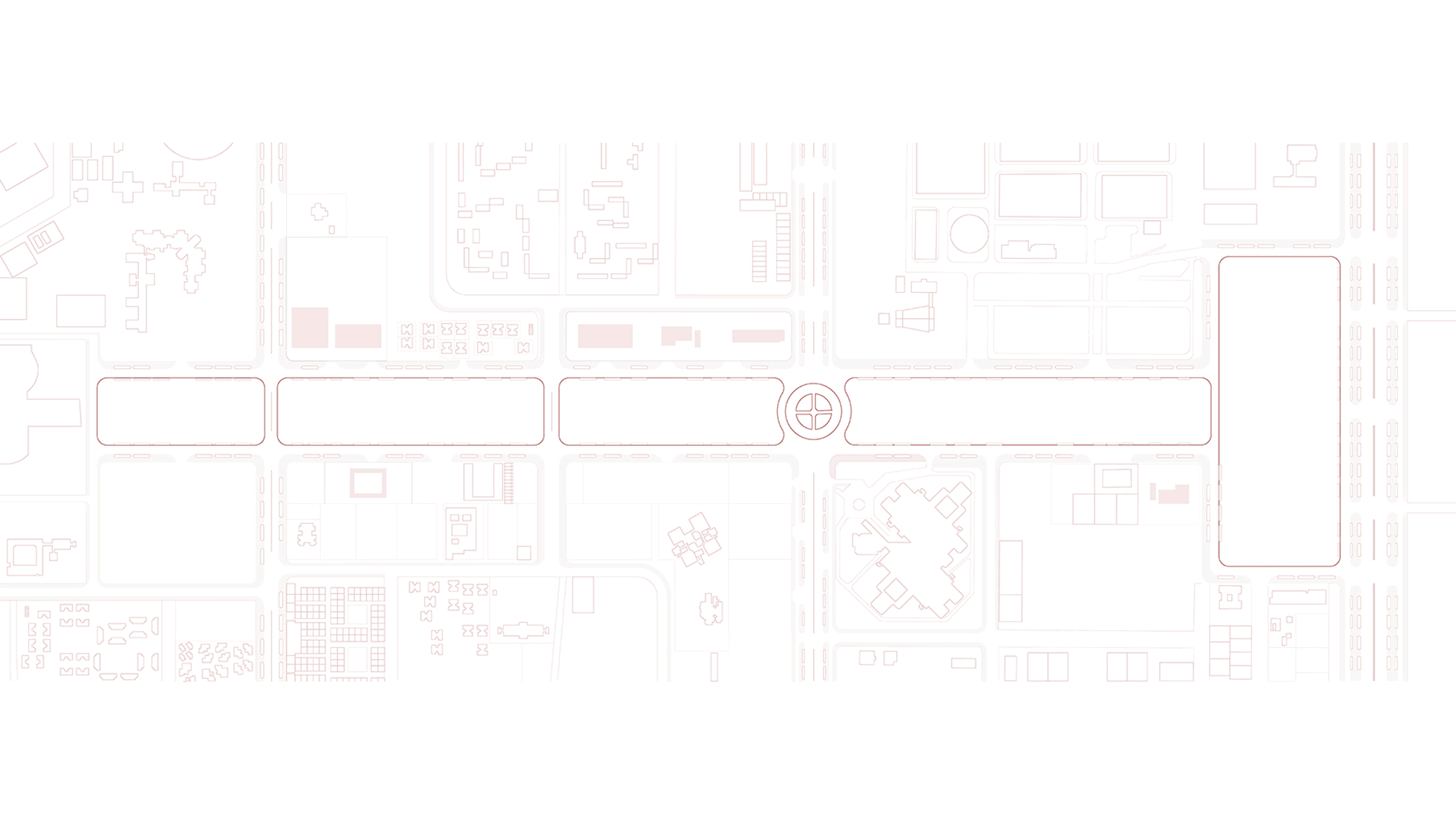
- The galleries on both ends serves as the entrance as well as exits into the edible museum in the form of special galleries exhibiting landscapes engaging all senses (due to the abutting major thoroughfares and presence of landmarks in the proximity with a large footfall).
- Each sense then becomes a gallery type fitting under the larger theme of Taste i.e. edible museum. While the galleries are for activating particular senses, it doesn’t mean there aren’t overlaps. (A visual gallery will also have species that have a particular fragrance or attract birds and cater to the sound.)
- A central corridor connects all the rooms in the galleries.
- Each room in the gallery has a central public plaza space.
- Each central plaza has corridor divisions in the form of minor pathways leading to smaller social spaces with proposed structures and spaces.
- People are then directed to the tree covers and shrubs that function as the artefacts in the edible galleries. The distribution is based on a set of principles (as shown on the sheet for trees versus shrubs cover variation).
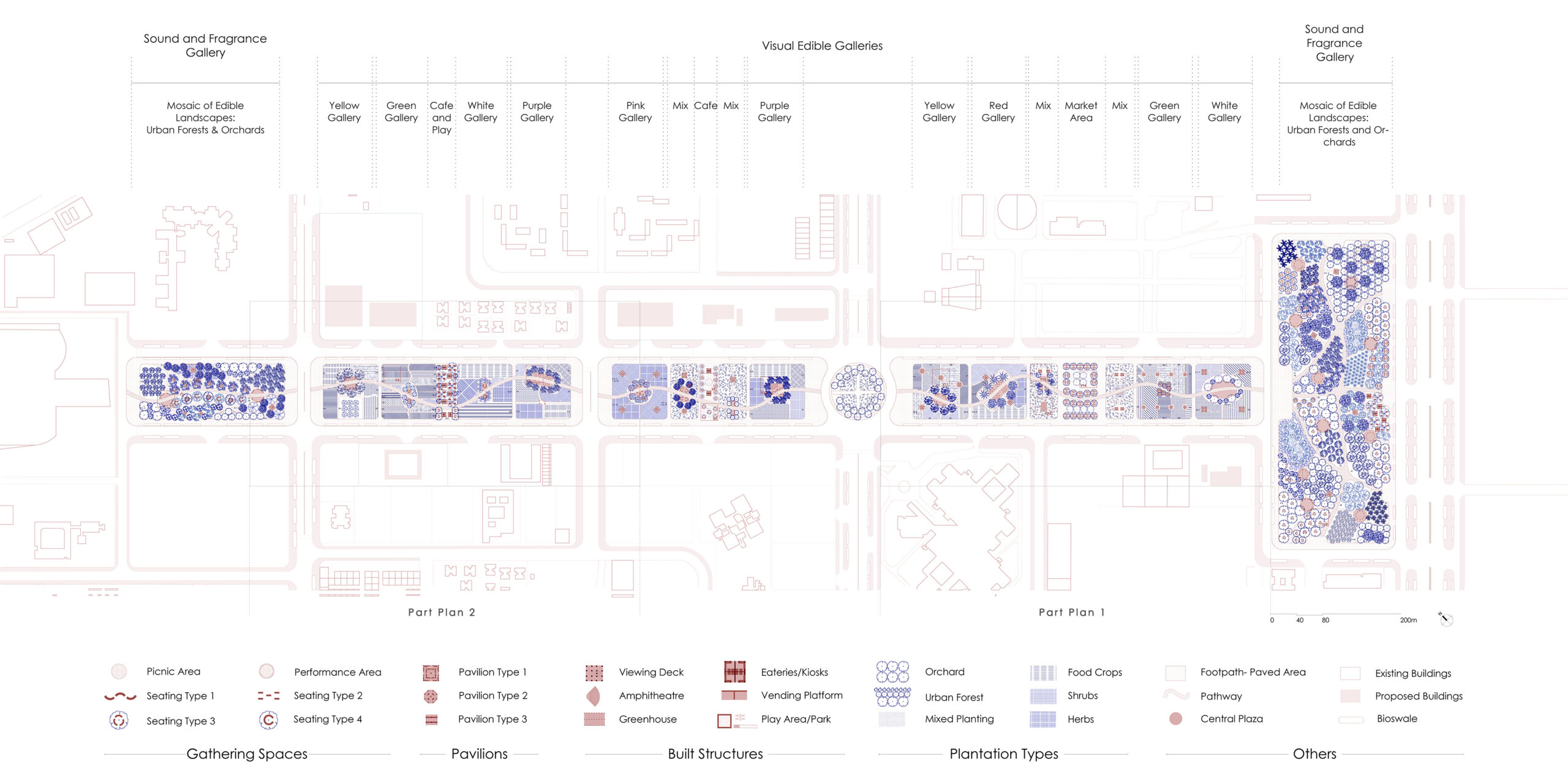
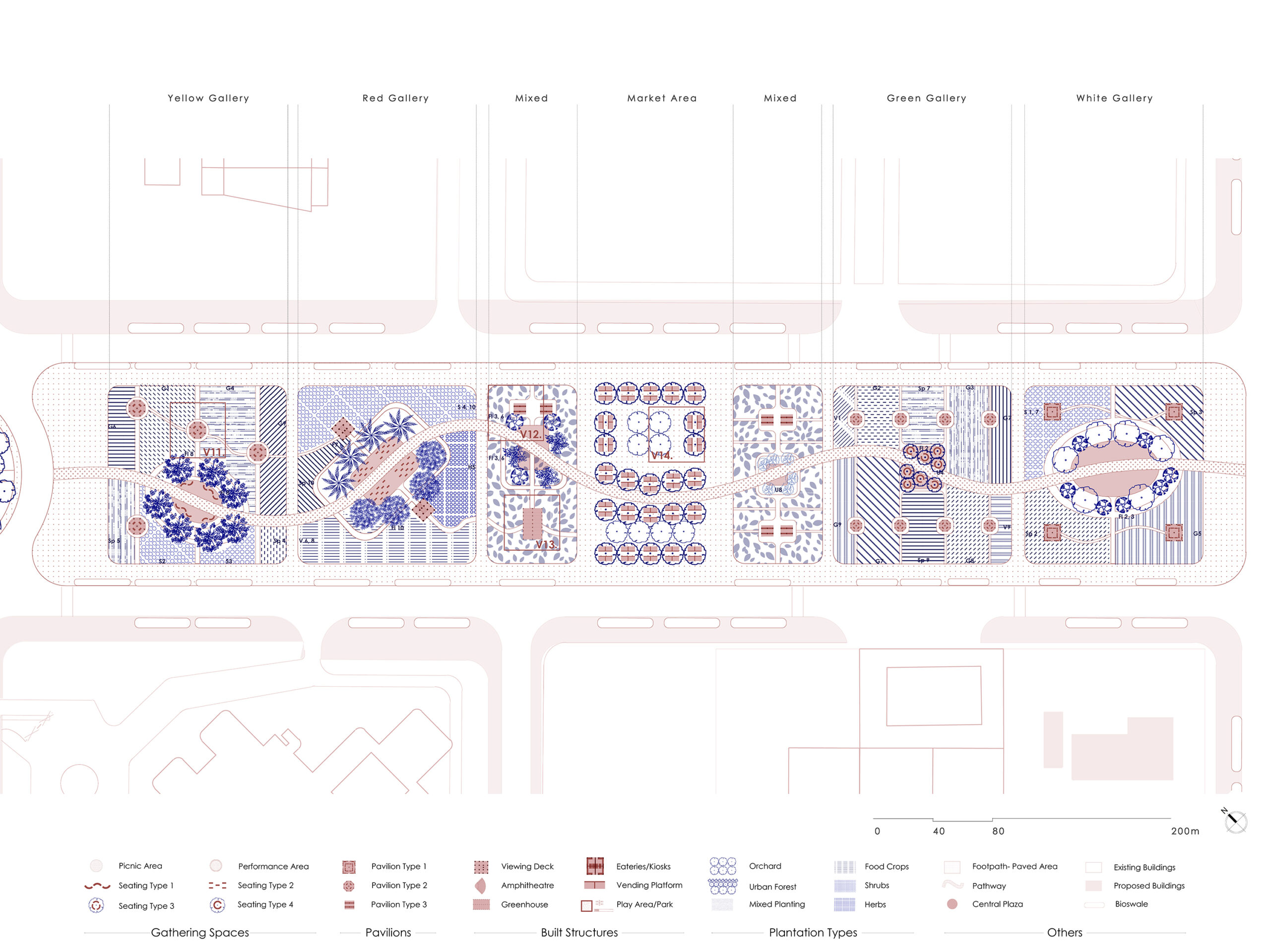

- All the galleries have social and ecological programs defined that engage the senses of taste (edibility) and touch (through foraging and farming). The special galleries have programs like picnic areas amidst tree covered areas and urban forests with trails for walking. Places for people to play, perform, sit and listen to the chirping of the birds that the edible museum also caters to are included as part of the programs.
- The visual gallery has rooms dedicated to various colours and pavilion areas to view the landscape artefacts.
- The Fragrance and Sound of the Edible Gallery houses species with prominent scents that also attract a diversity of birds and insects with prominent sounds with which pavilions and viewing decks are provided.
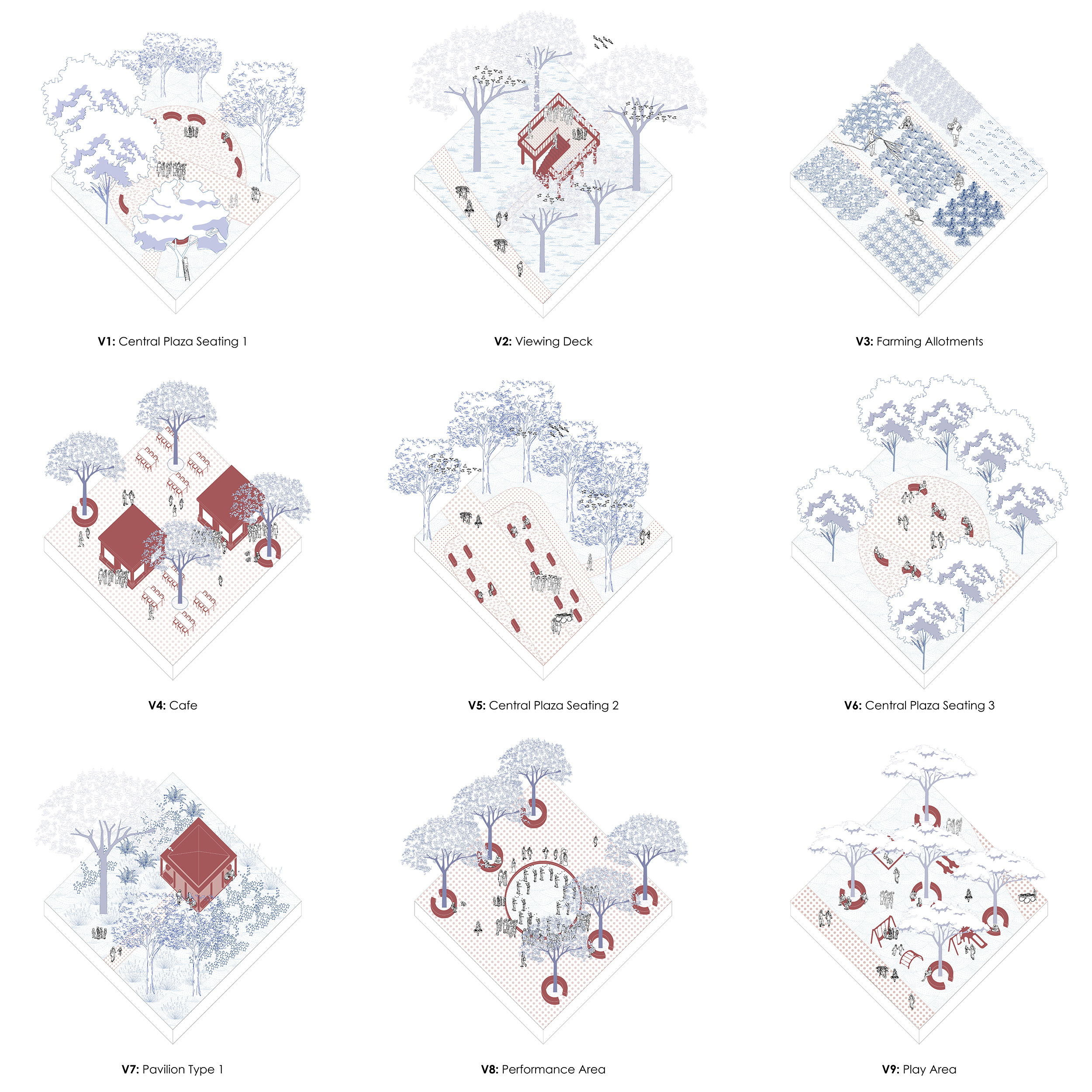

The central public spaces accommodate markets and eateries where what has been cultivated in the galleries can be bought. Intermediate seating spaces, performance and play areas, picnic spots, viewing decks, pavilions, amphitheatre, greenhouses, farming plots and orchards are proposed in the galleries for actively engaging with the edible landscapes.
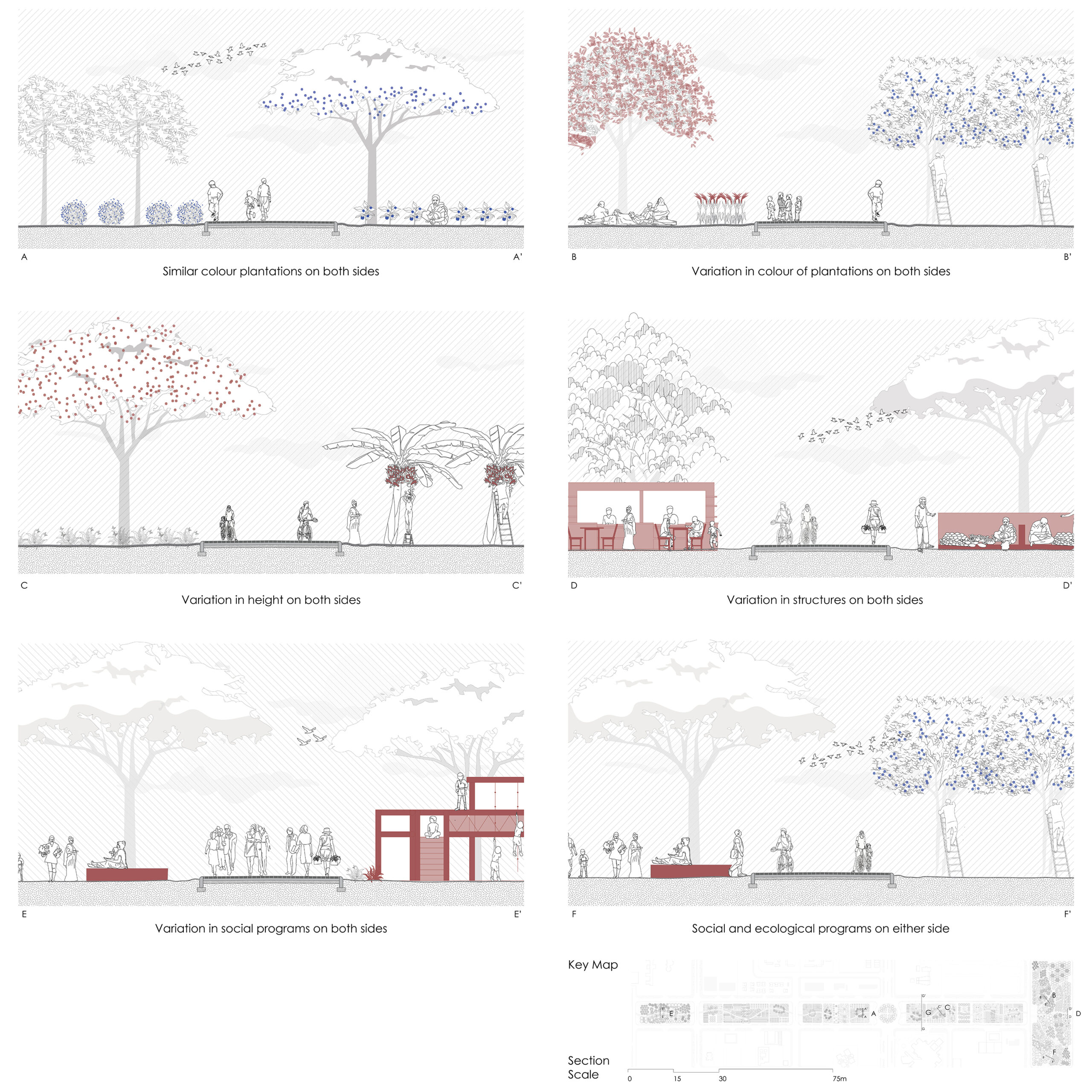
There are variations in the experiences either through the variation or similarity in colours on both sides, a difference in height, variation in social and ecological programs and a multitude of species, be it flora or fauna that one is subjected to as one walks through the central corridor.

Each of the rooms in the specific galleries have a set of socio-ecological programs. These ecological programs have a preliminary set of species and based on the gallery type, the species are planted. For instance, the Yellow Gallery will house species like corn, bajra, amaltas tree, sunflowers and marigolds.
Timescales of Dynamism in the Edible Museum
As one walks through the various corridors or pauses in the central public spaces to engage with the artefacts, they experience the dynamism of these edible landscapes at various timescales.
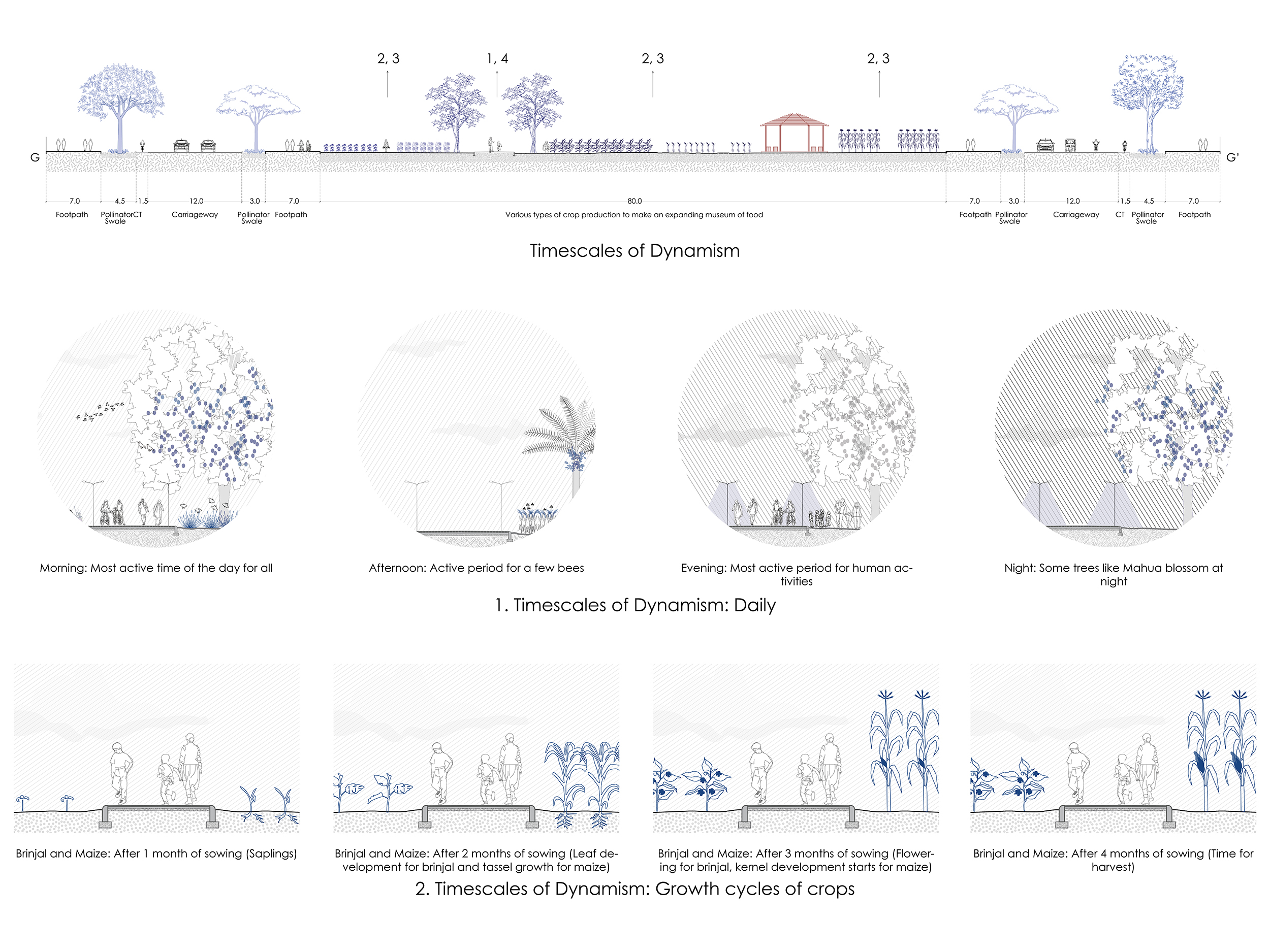
- At the smallest timescale, the dynamism is exhibited during different time periods of the day.
- At a slightly extended timescale, it is within the cycle of a species. For instance, over three months here exhibiting different stages throughout its cycle, from sowing to harvesting.
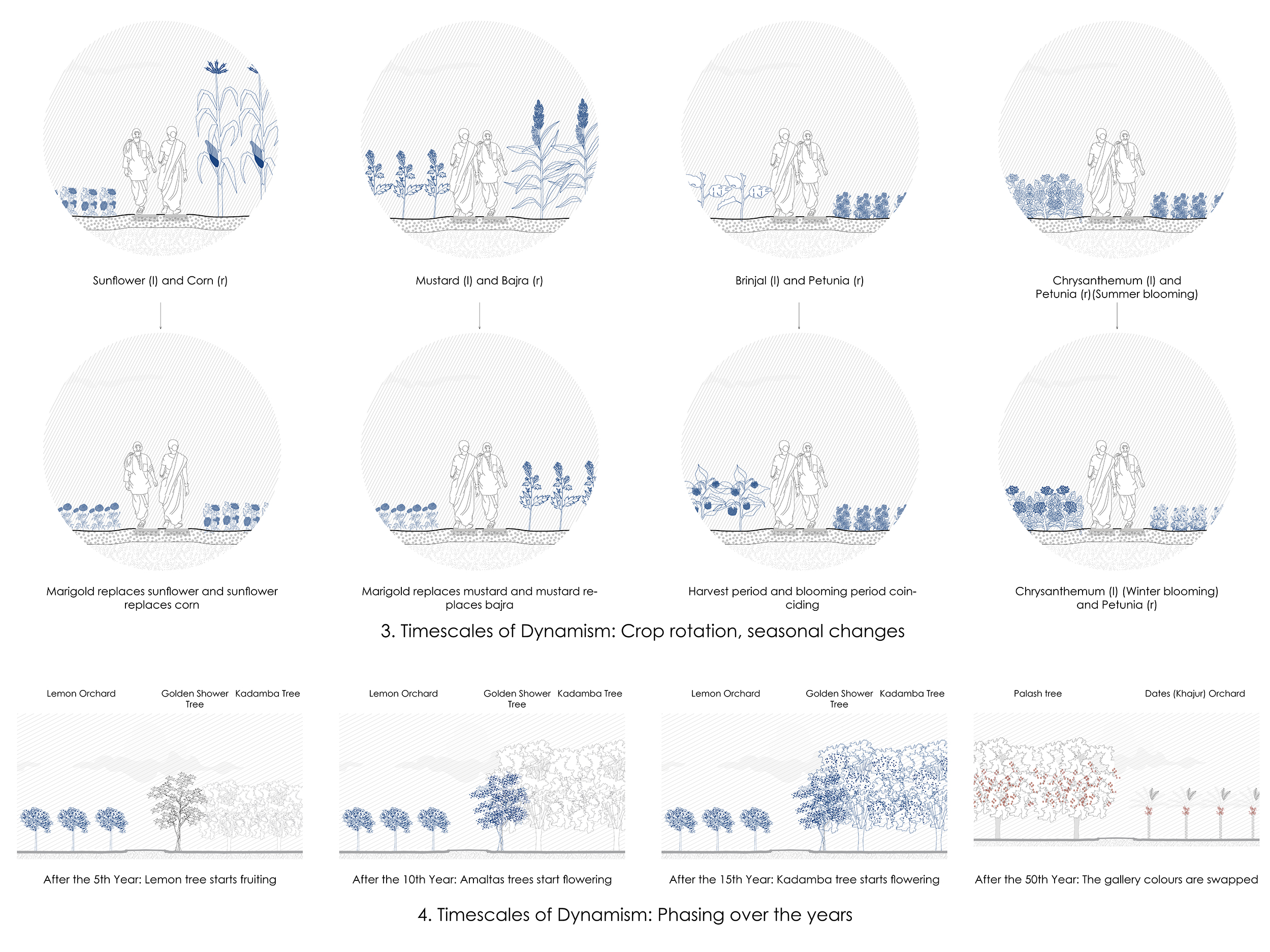
- At an even larger timescale, the dynamism of the museum is through the blooming period of some of the species and the changing nature of patches over time based on crop rotation patterns.
- The largest level of dynamism occurs over the years, based on the varying growth periods and inception of fruiting or flowering capabilities.
The Role of the Central Vista Edible Museum
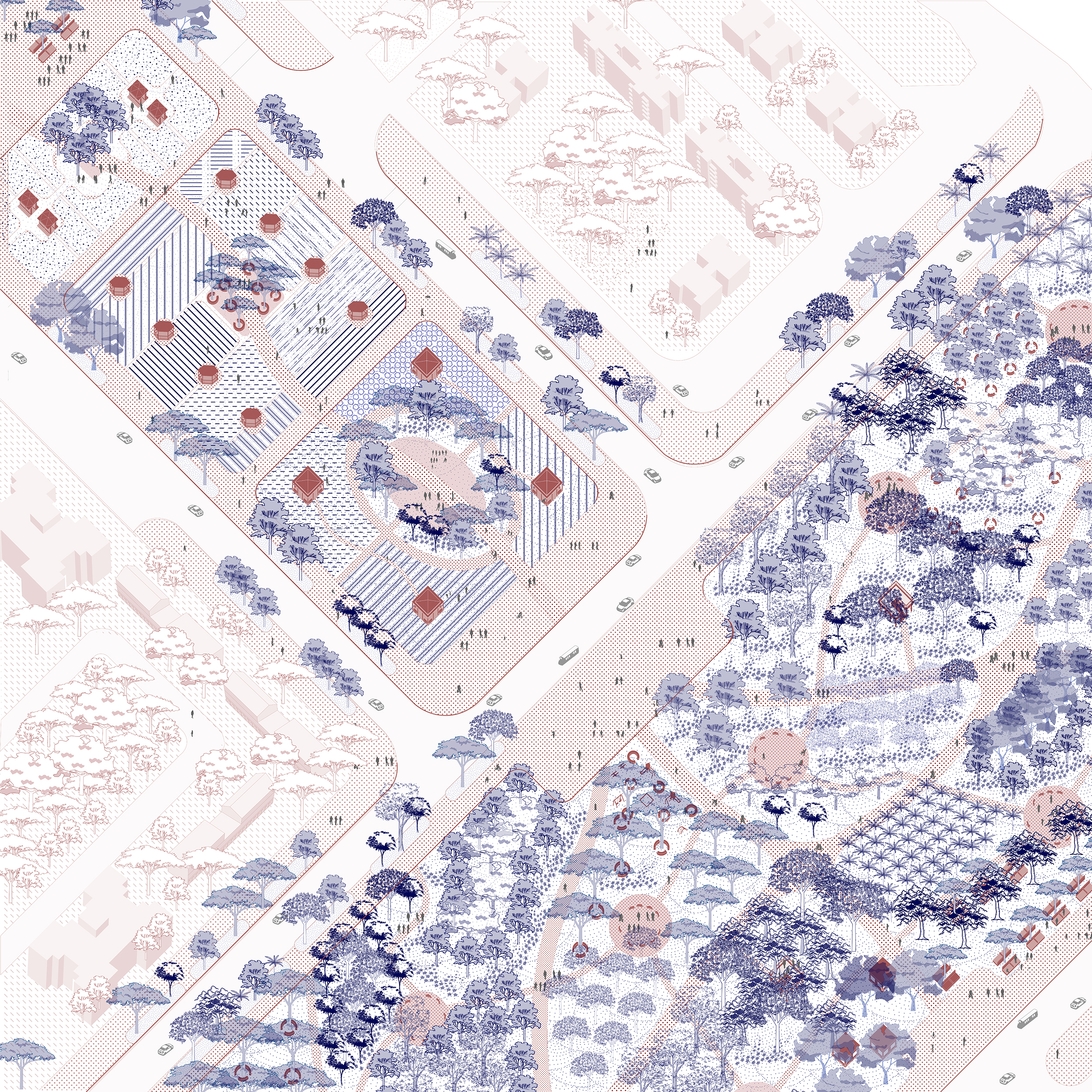
The project thus exhibits the prominence of the Central Vista as the central public space of the city and creates landmarks on various streets with respect to the edible museum. The prominence is attained through a dynamic museum with a mosaic of edible for many landscapes which enhances the socio-ecological relation by actively engaging people with programs proposed while also benefiting economically and ecologically.



